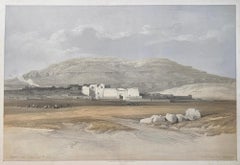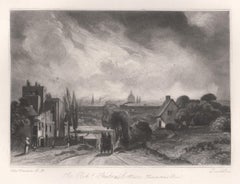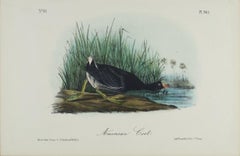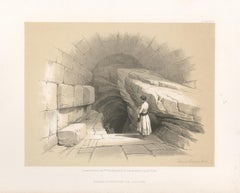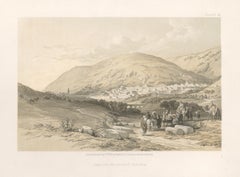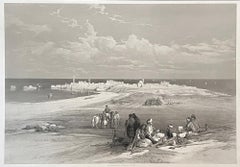Mid-19th Century Landscape Prints
Victorian Mid-19th Century Landscape Prints
Lithograph
Victorian Mid-19th Century Landscape Prints
Mezzotint
Naturalistic Mid-19th Century Landscape Prints
Lithograph
Victorian Mid-19th Century Landscape Prints
Lithograph
Victorian Mid-19th Century Landscape Prints
Lithograph
Victorian Mid-19th Century Landscape Prints
Lithograph
Mid-19th Century Landscape Prints
Woodcut
French School Mid-19th Century Landscape Prints
Handmade Paper, Engraving, Etching
Mid-19th Century Landscape Prints
Etching
Naturalistic Mid-19th Century Landscape Prints
Lithograph
Contemporary Mid-19th Century Landscape Prints
Etching
Modern Mid-19th Century Landscape Prints
Etching
Realist Mid-19th Century Landscape Prints
Drypoint, Etching
Modern Mid-19th Century Landscape Prints
Lithograph
Academic Mid-19th Century Landscape Prints
Watercolor, Etching
Modern Mid-19th Century Landscape Prints
Etching
Realist Mid-19th Century Landscape Prints
Drypoint, Etching
French School Mid-19th Century Landscape Prints
Laid Paper, Etching
Naturalistic Mid-19th Century Landscape Prints
Lithograph
Mid-19th Century Landscape Prints
Engraving
Modern Mid-19th Century Landscape Prints
Lithograph
French School Mid-19th Century Landscape Prints
Handmade Paper, Laid Paper, Etching
French School Mid-19th Century Landscape Prints
Etching
French School Mid-19th Century Landscape Prints
Handmade Paper, Etching
English School Mid-19th Century Landscape Prints
Oil, Handmade Paper, Aquatint
Realist Mid-19th Century Landscape Prints
Laid Paper, Lithograph
English School Mid-19th Century Landscape Prints
Lithograph, Handmade Paper
Naturalistic Mid-19th Century Landscape Prints
Lithograph
French School Mid-19th Century Landscape Prints
Laid Paper, Etching
Victorian Mid-19th Century Landscape Prints
Mezzotint
French School Mid-19th Century Landscape Prints
Etching
Other Art Style Mid-19th Century Landscape Prints
Lithograph
Naturalistic Mid-19th Century Landscape Prints
Lithograph
Modern Mid-19th Century Landscape Prints
Etching
Victorian Mid-19th Century Landscape Prints
Lithograph
French School Mid-19th Century Landscape Prints
Handmade Paper, Etching, Lithograph
American Modern Mid-19th Century Landscape Prints
Lithograph
Mid-19th Century Landscape Prints
Mezzotint
Naturalistic Mid-19th Century Landscape Prints
Lithograph
French School Mid-19th Century Landscape Prints
Etching, Handmade Paper
Naturalistic Mid-19th Century Landscape Prints
Lithograph
Naturalistic Mid-19th Century Landscape Prints
Lithograph
Realist Mid-19th Century Landscape Prints
Lithograph
Mid-19th Century Landscape Prints
Engraving
English School Mid-19th Century Landscape Prints
Handmade Paper, Lithograph
Realist Mid-19th Century Landscape Prints
Lithograph
Naturalistic Mid-19th Century Landscape Prints
Lithograph
Modern Mid-19th Century Landscape Prints
Etching
English School Mid-19th Century Landscape Prints
Oil, Handmade Paper, Aquatint
Naturalistic Mid-19th Century Landscape Prints
Lithograph
Naturalistic Mid-19th Century Landscape Prints
Lithograph
Naturalistic Mid-19th Century Landscape Prints
Lithograph
Naturalistic Mid-19th Century Landscape Prints
Lithograph
Modern Mid-19th Century Landscape Prints
Ink, Pencil
Victorian Mid-19th Century Landscape Prints
Mezzotint
Modern Mid-19th Century Landscape Prints
Lithograph
Naturalistic Mid-19th Century Landscape Prints
Lithograph
Realist Mid-19th Century Landscape Prints
Laid Paper, Lithograph
Realist Mid-19th Century Landscape Prints
Laid Paper, Lithograph
Realist Mid-19th Century Landscape Prints
Laid Paper, Lithograph
